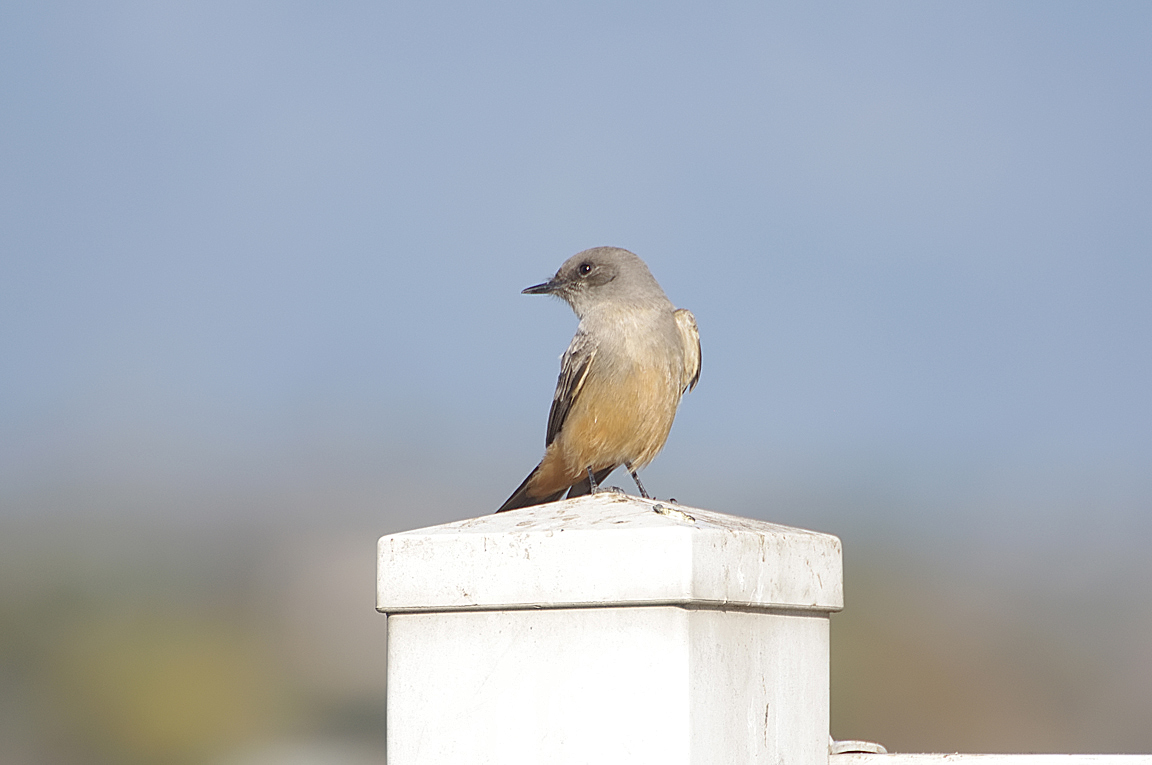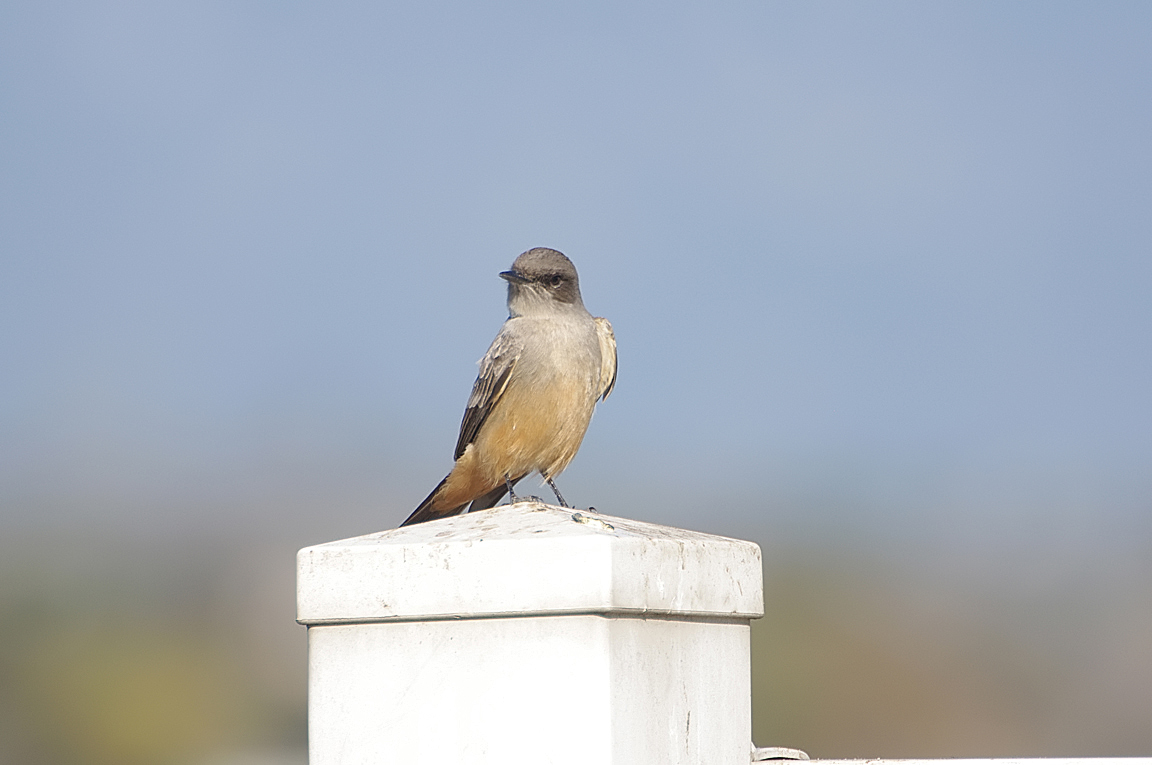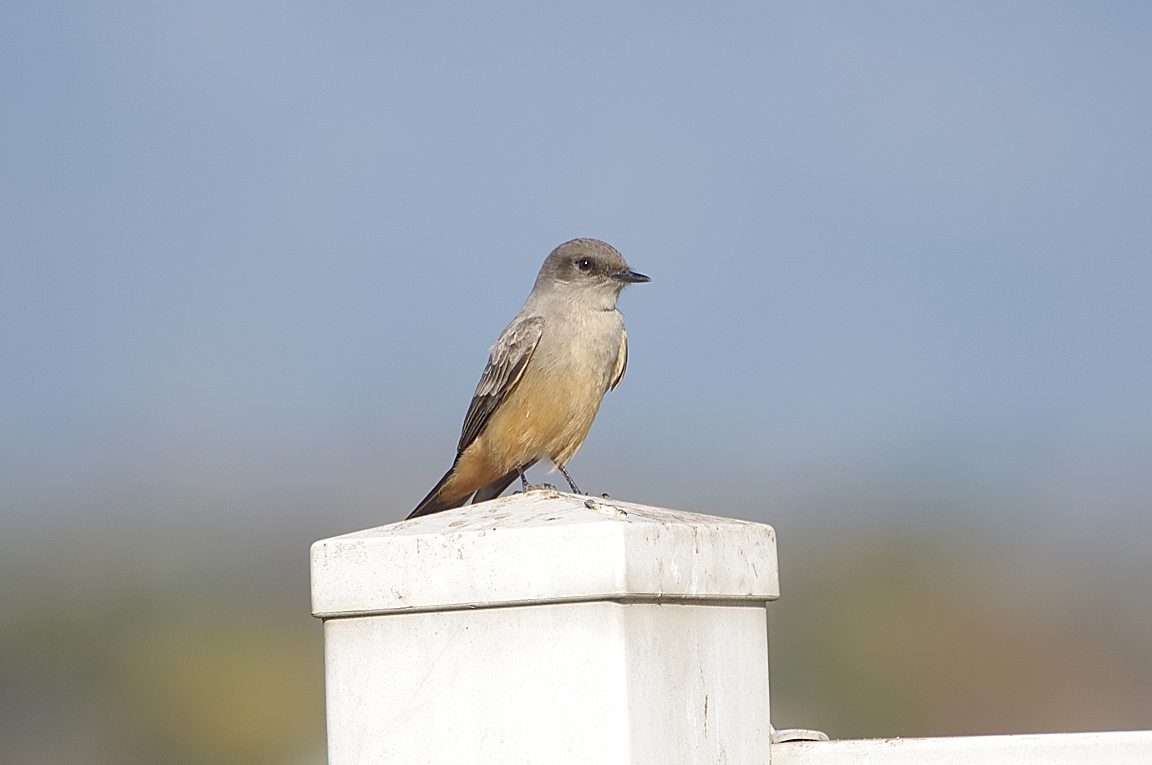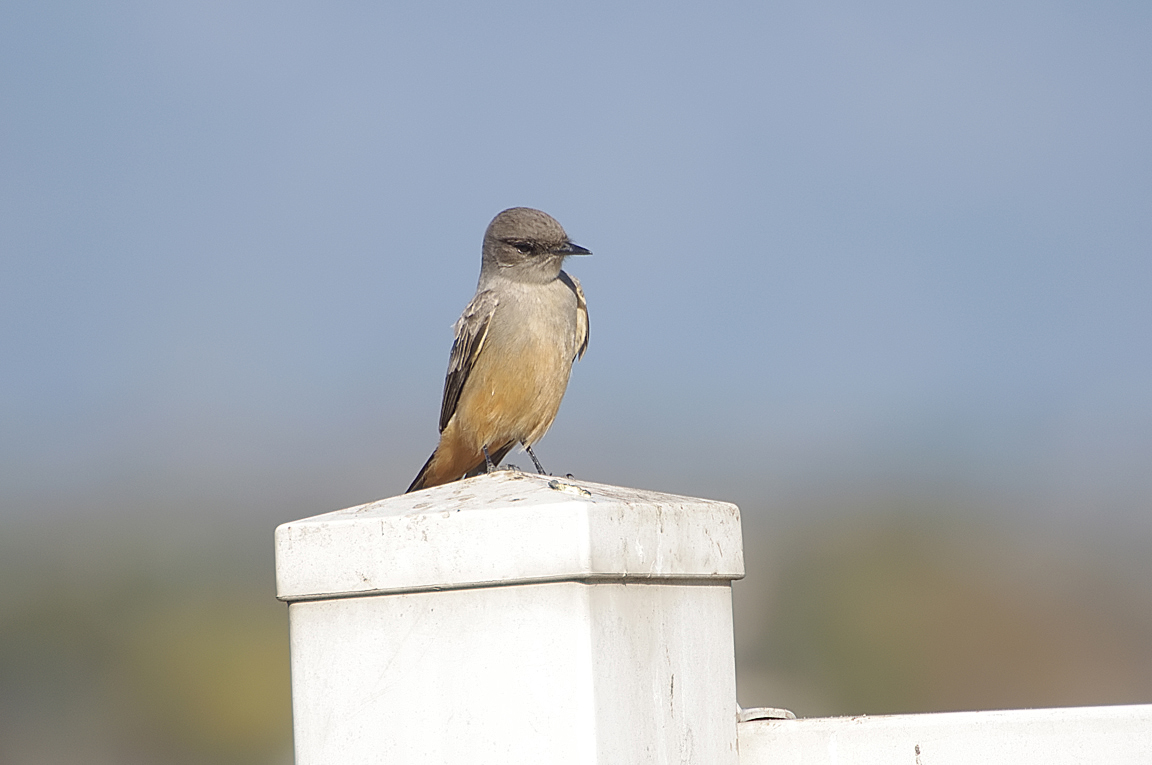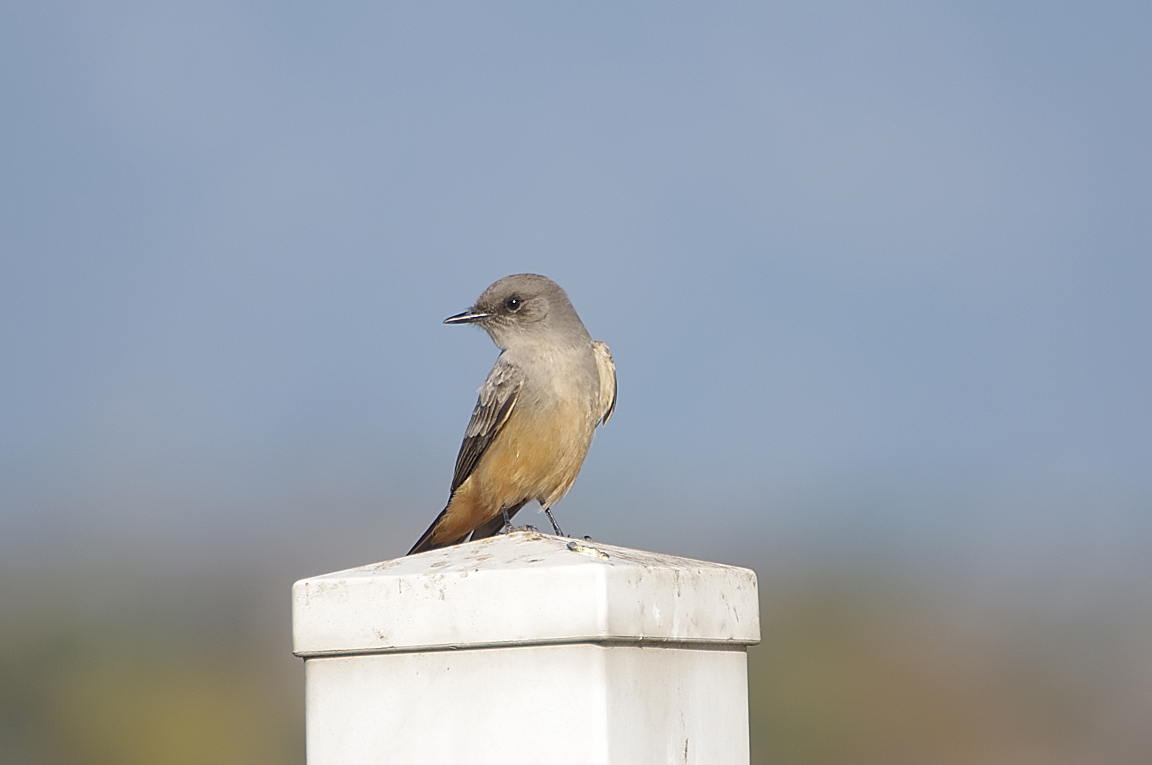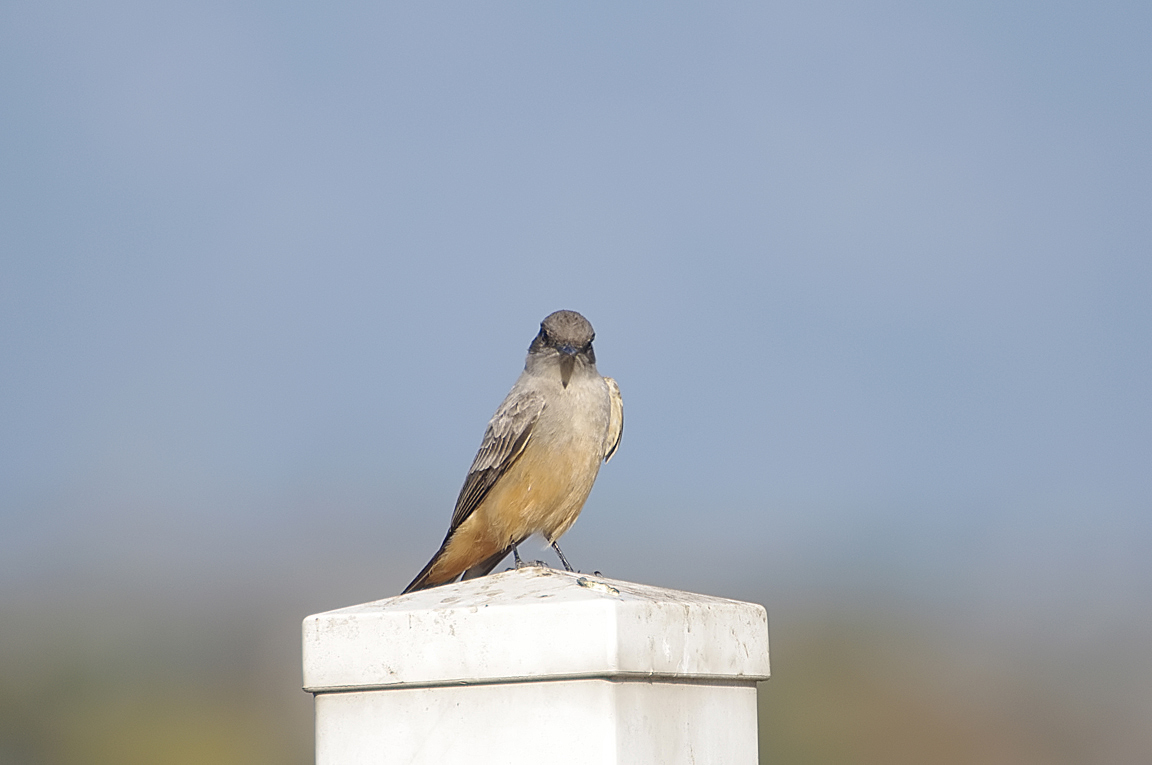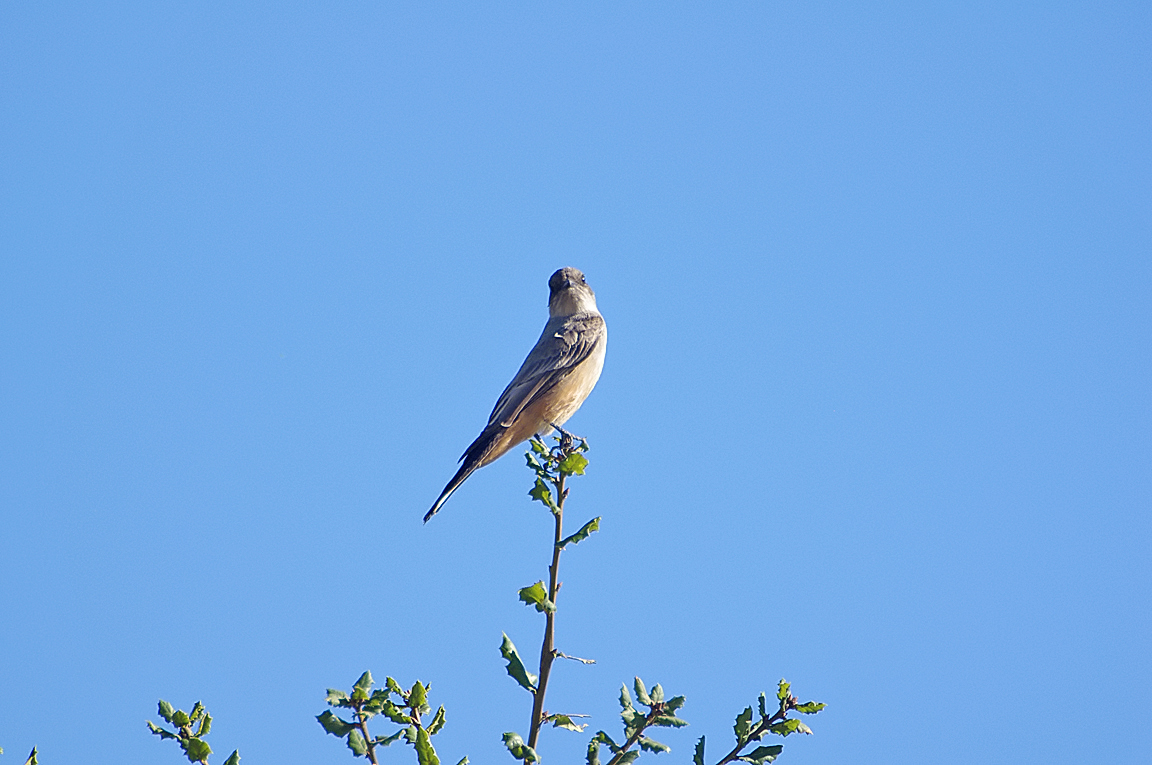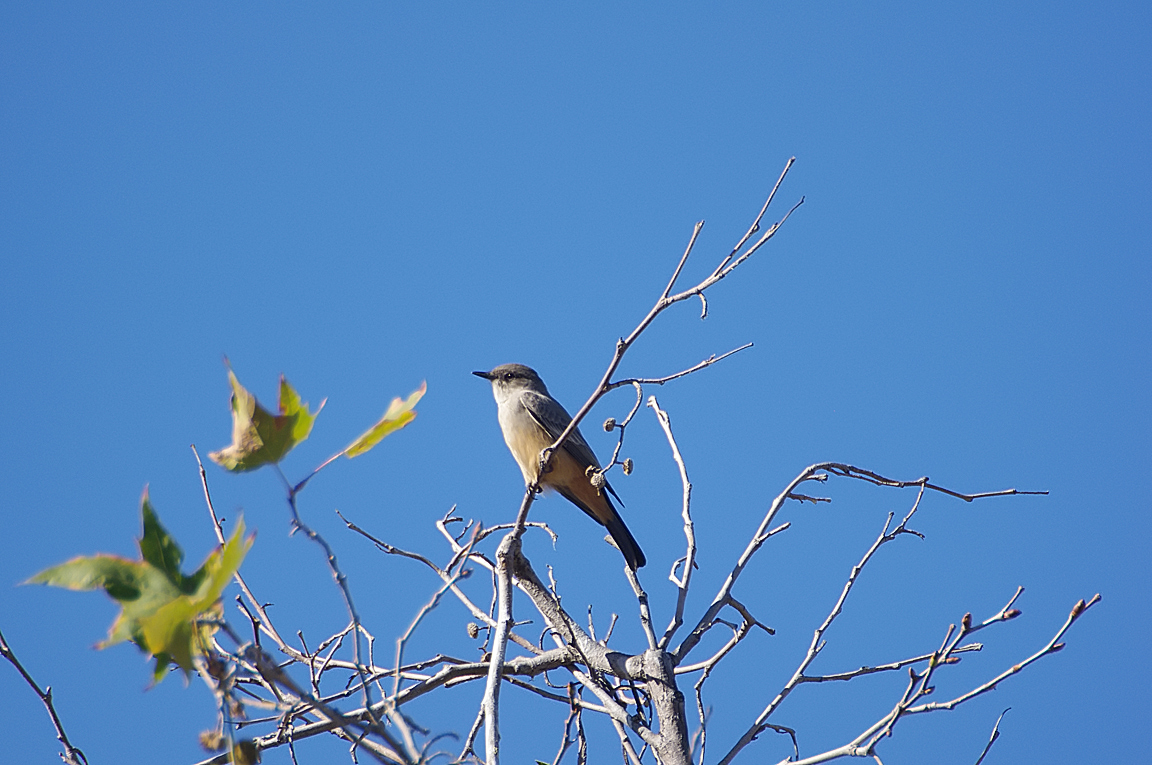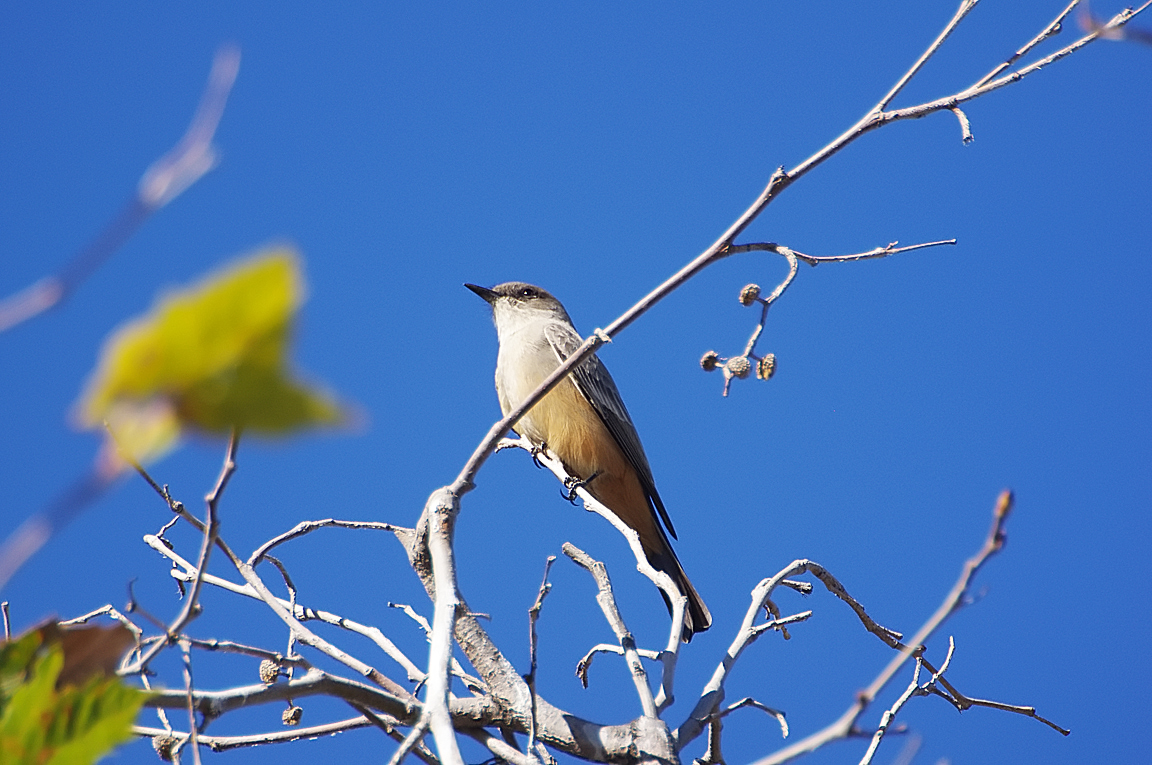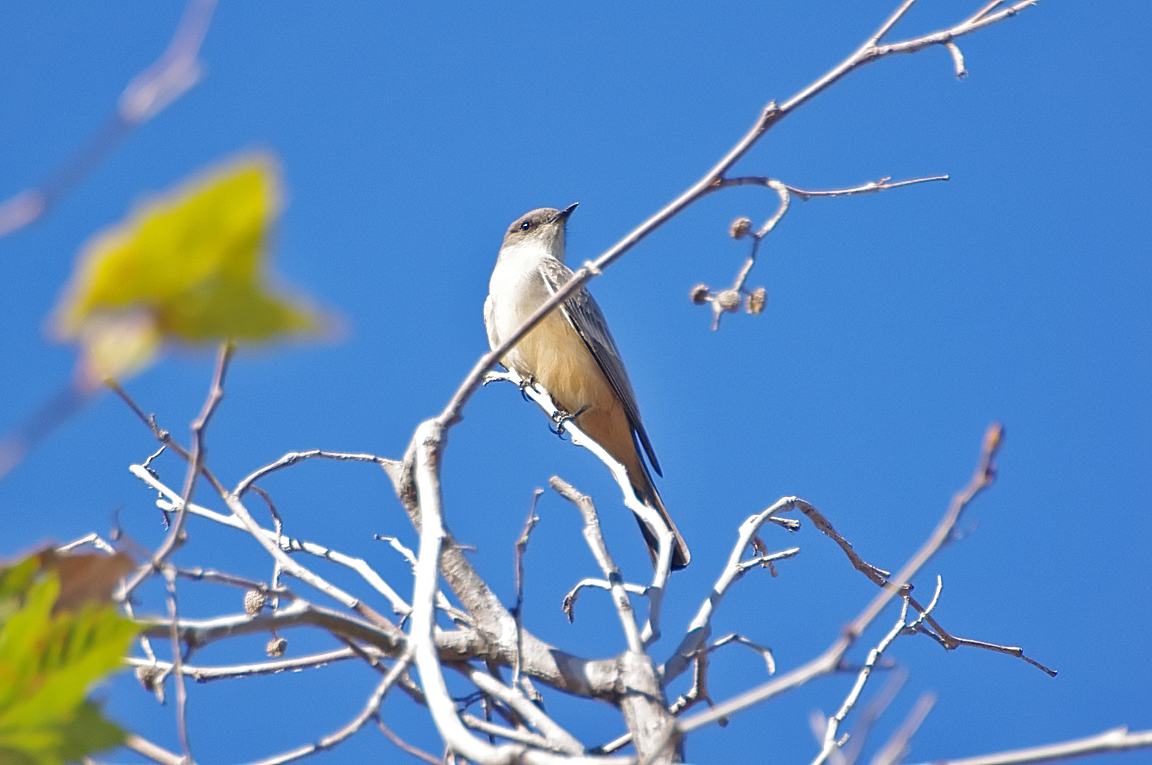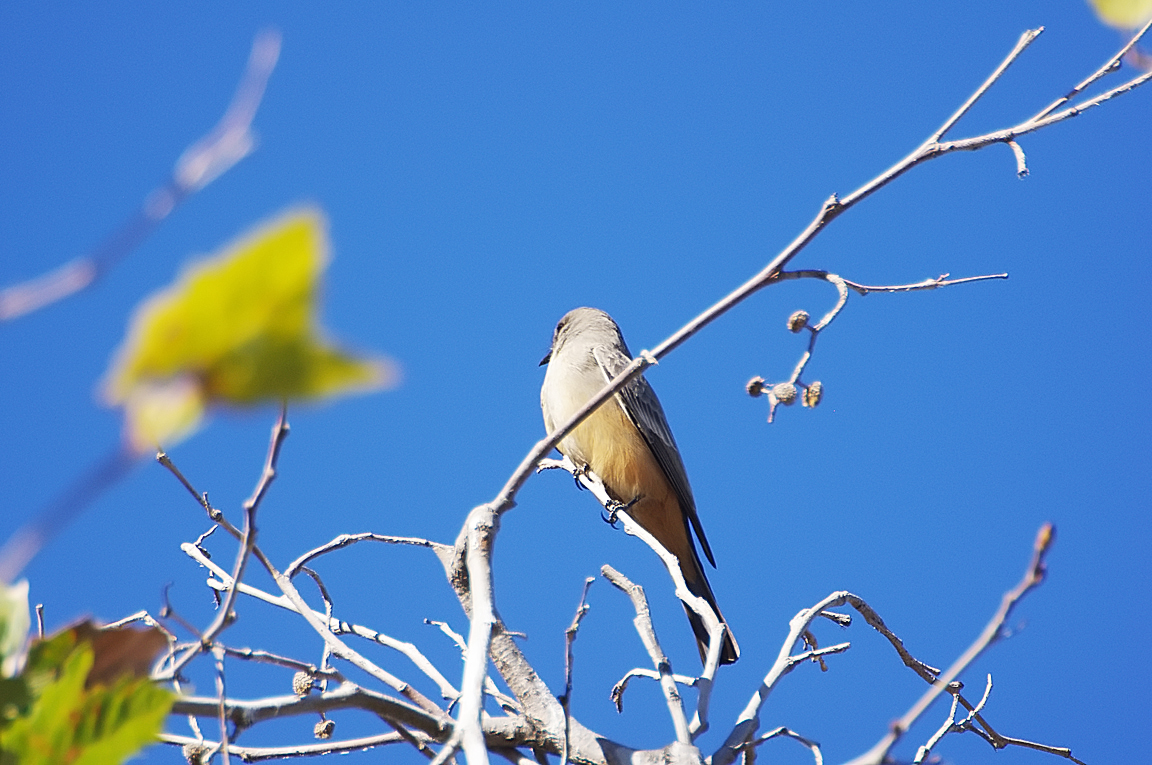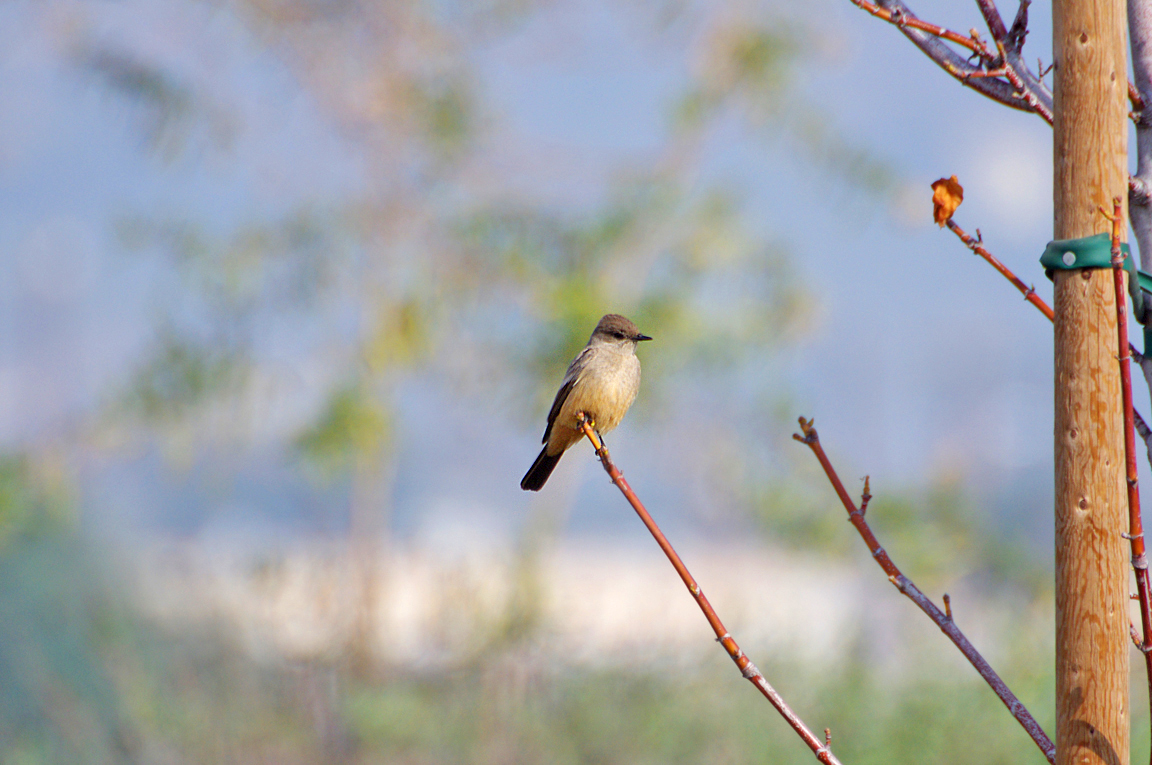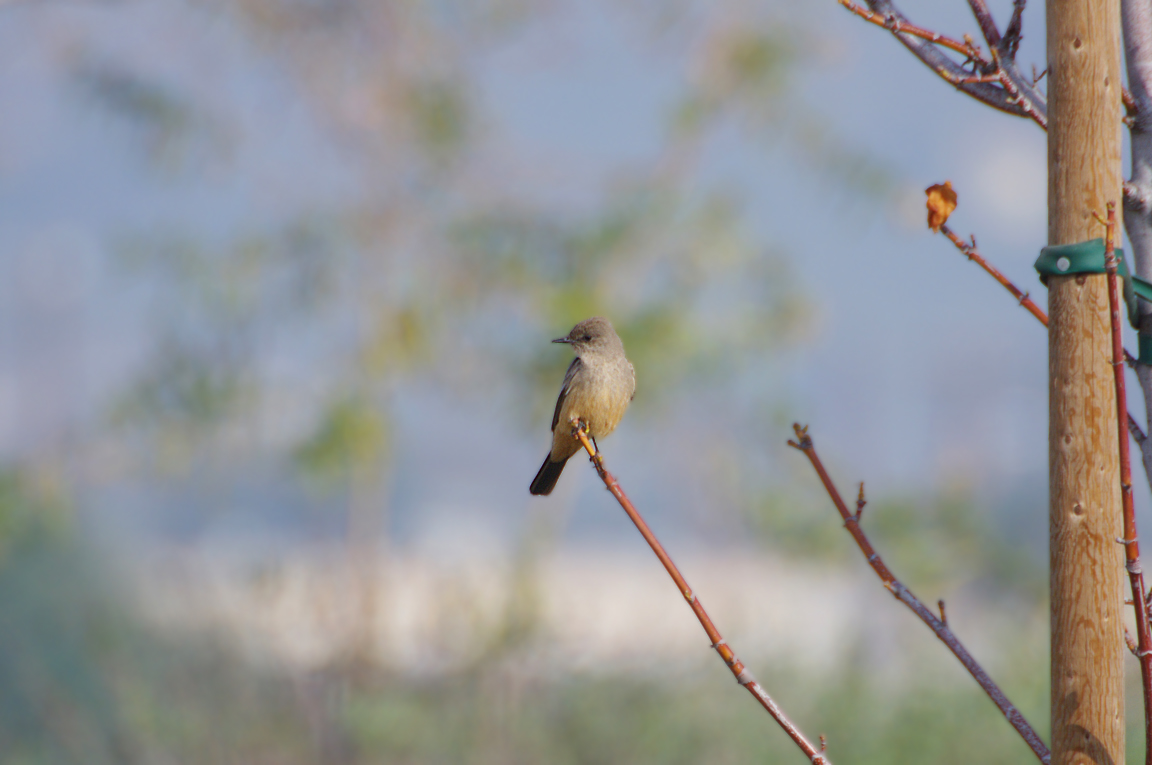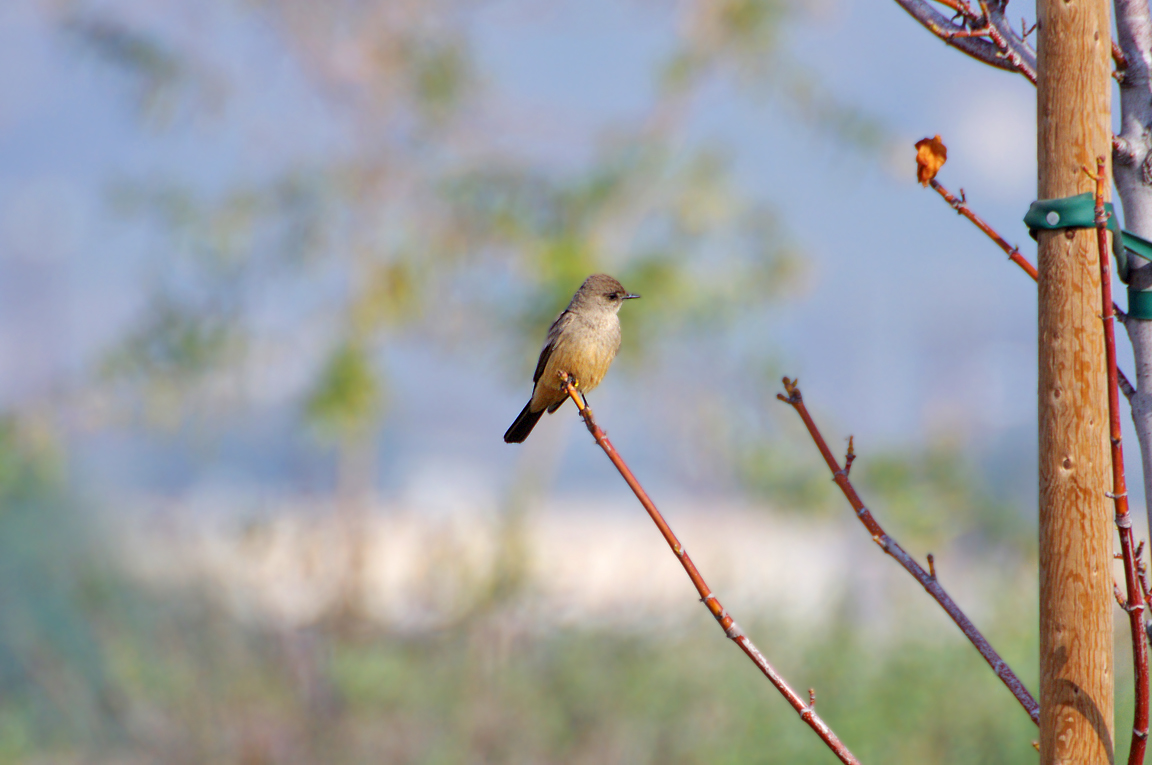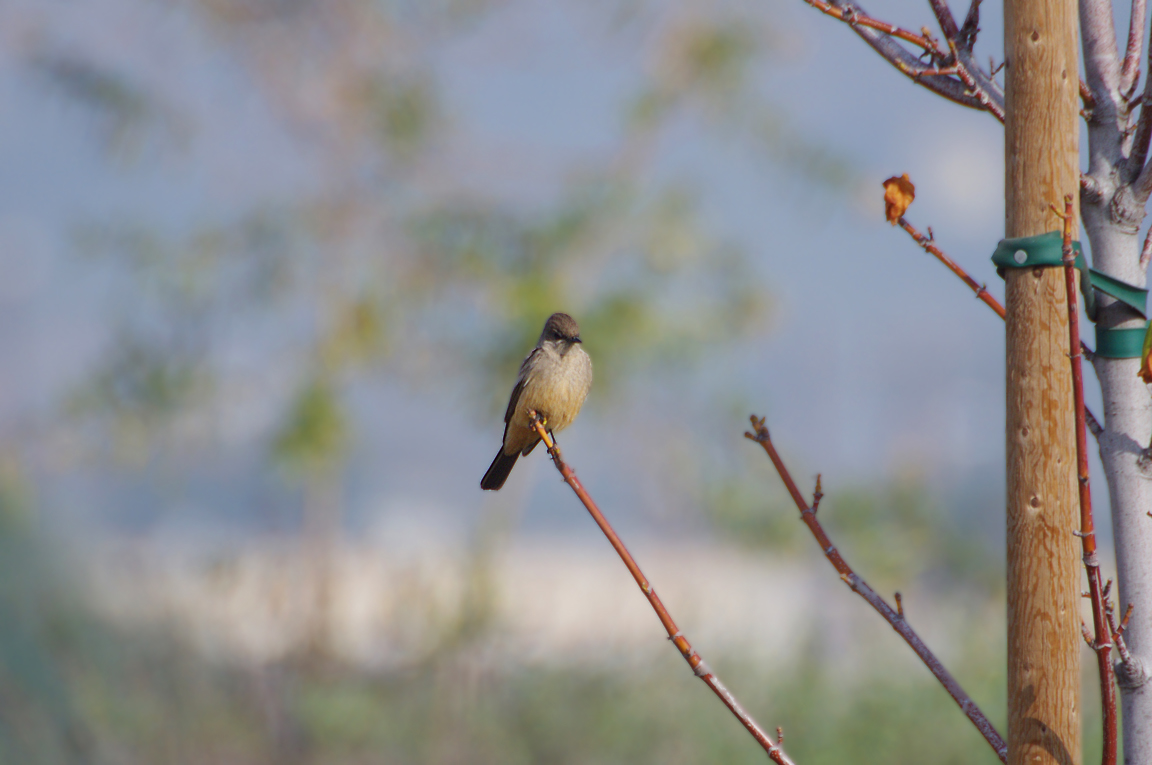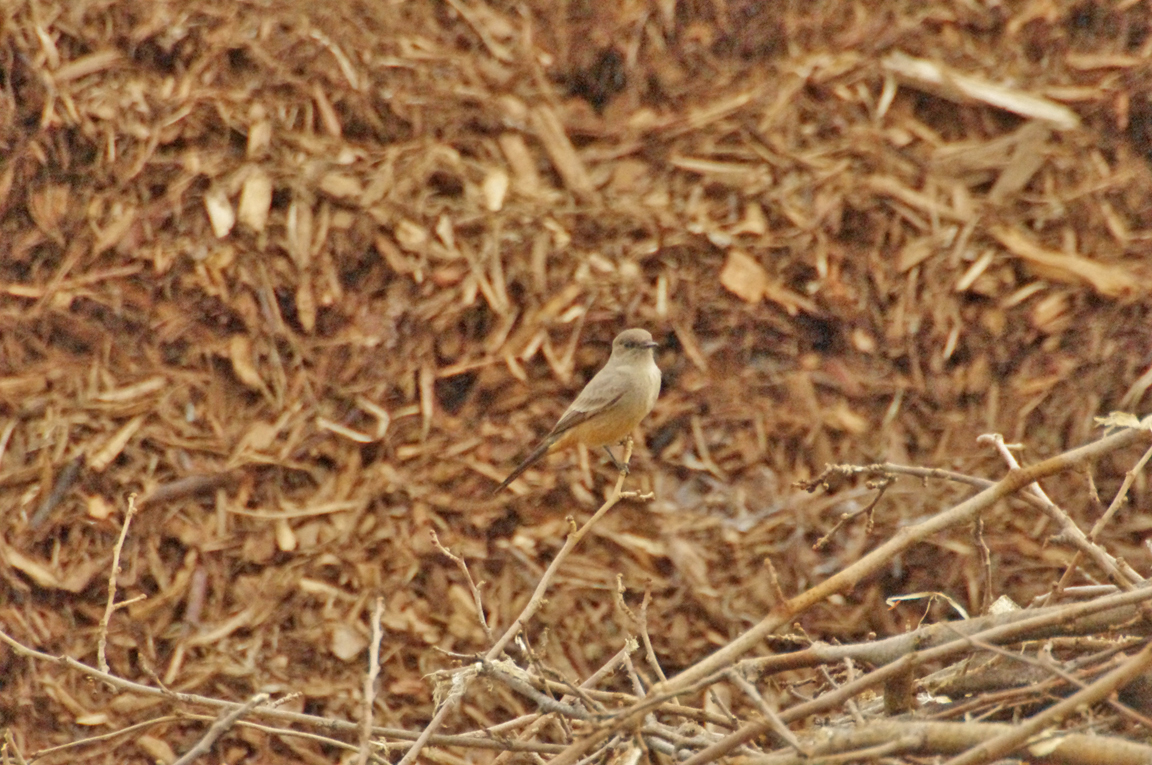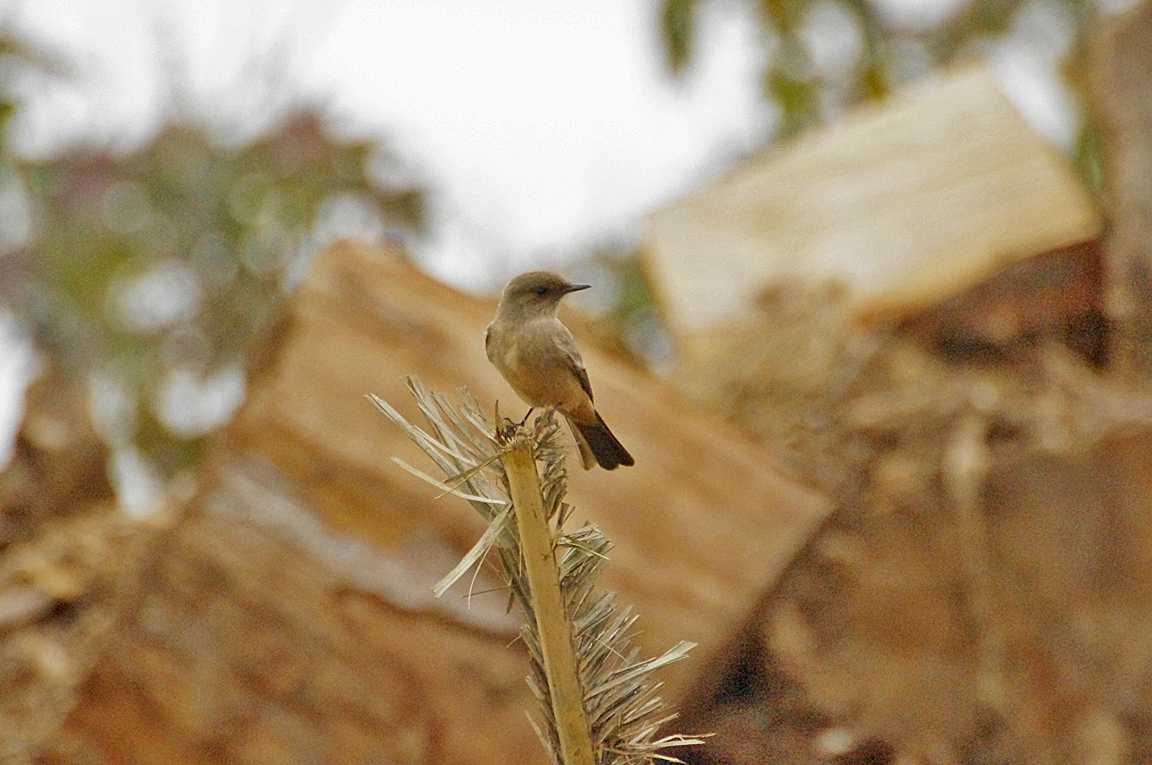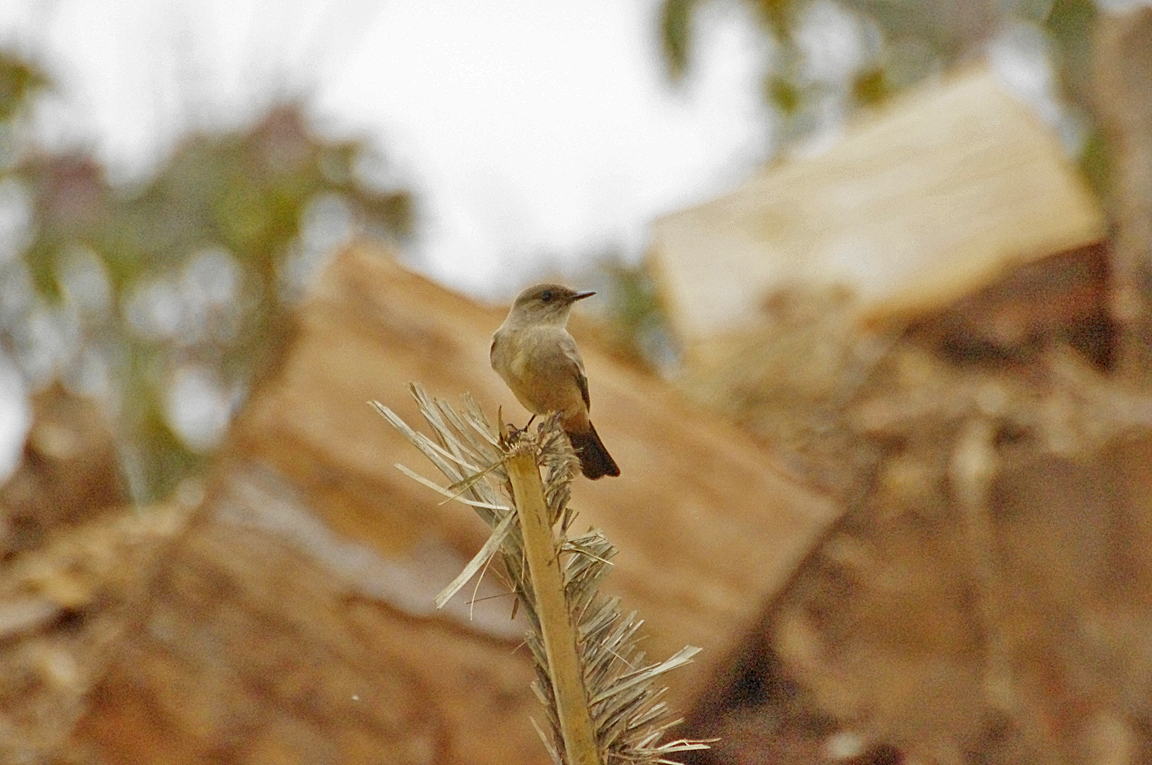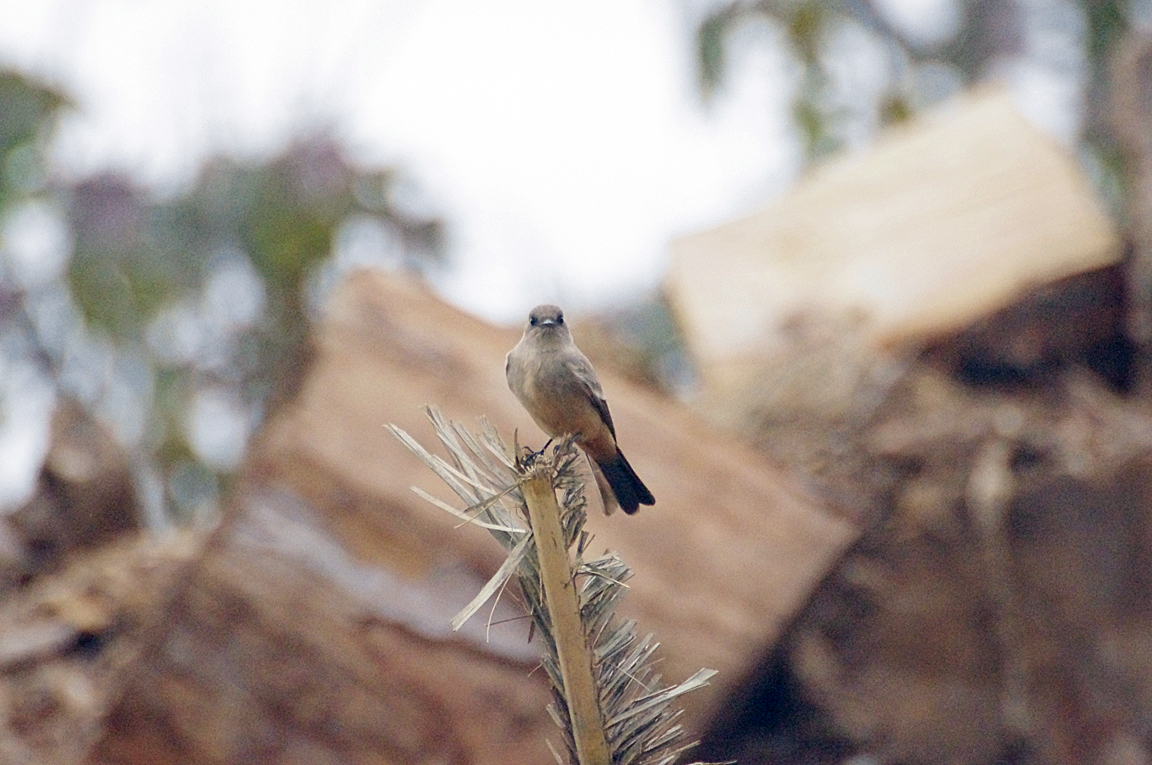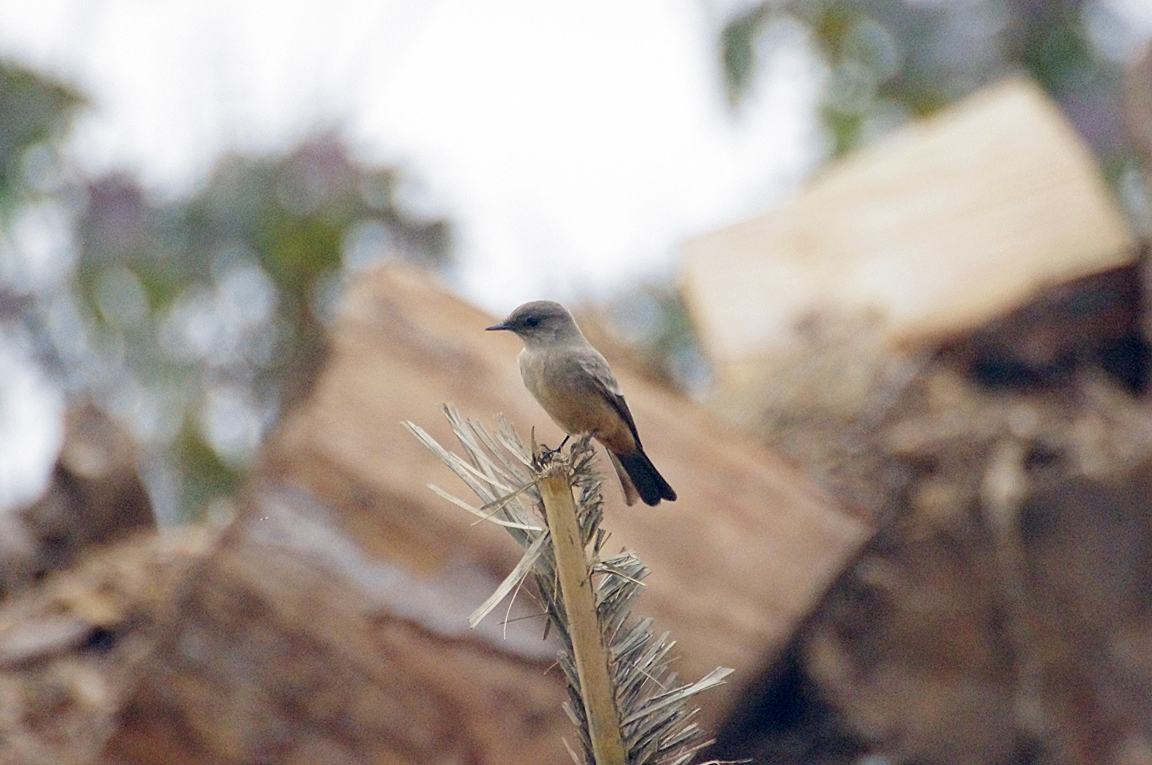|
|
|
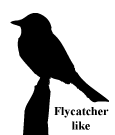 |
Say's Phoebe
|
| Sayornis saya | |
Like other phoebes, the rusty-bellied Say's Phoebe is common around people, often nesting on buildings. A bird of open country, it is found from Alaska through Mexico.
Interesting Information
-
The Say's Phoebe breeds farther north than any other flycatcher, seemingly limited only by the lack of nest sites. It breeds north past tree line, and may be following the Alaska pipeline even farther north, nesting on the pipeline itself.
-
The numbers of this bird are declining, probably due to loss of habitat in its winter range.
-
This bird was named for Thomas Say, the American naturalist.
-
A group of flycatchers has many collective nouns, including an "outfield", "swatting", "zapper", and "zipper" of flycatchers.
Description
Adult Description
-
Length Range: 18-20 cm (7-8 in)
-
Weight: 20 g (0.7 oz)
Small songbird; medium-sized flycatcher.
Upperparts pale brownish gray.
Belly and undertail cinnamon.
Wags tail.
Sex Differences
Sexes Similar
Immature
Immature like adult, but browner and may show buff wingbar.
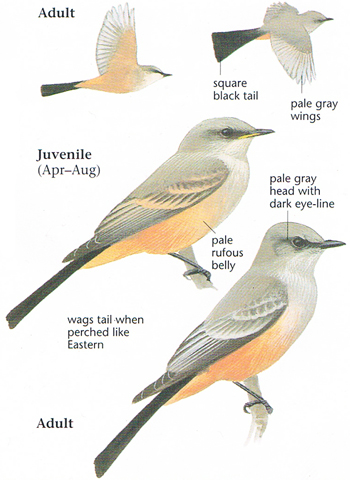
Photo taken from: The Sibley Field Guide by David Allen Sibley
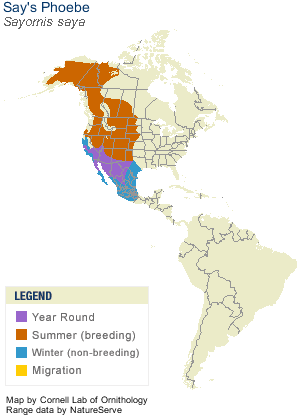
© 2003 Cornell Lab of Ornithology
|
Habitat |
|
Open country, sagebrush, badlands, dry barren foothills, canyons, borders of deserts, and ranches. Often around buildings. Avoids watercourses and heavy forest. |
|
Behavior |
|
Flies from perch near ground and pursues flying insects. Also hovers and gleans insects off of vegetation. |
|
Food |
|
Flying and terrestrial insects. |
Taxonomy
| Kingdom: | Animalia |
| Phylum: | Chordata |
| Subphylum: | Vertebrata |
| Class: | Aves |
| Order: | Passeriformes |
| Family: | Tyrannidae |
| Genus: | Sayornis |
| Species: | Sayornis saya |
| Subspecies: | Sayornis saya pallidus |
| Sayornis saya quiescens | |
| Sayornis saya saya |
Similar Species |
|
|
Bird Sound |
|
Song a low, whistled "pit-tsee-eur" alternated with a burry upslurred "churr-eep." Also a "phee-eur." |
|
Eggs look like this |
|
Photo taken from: ARCTOS Collaborative Collection Management Solution |
